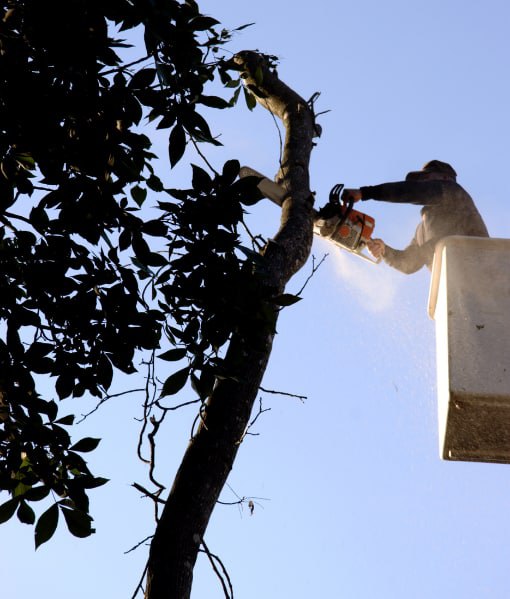
Introduction: Forests have always been a valuable resource for humanity, providing timber for construction, paper, and countless other products. Sustainable timber production is essential to ensure the longevity of this resource and minimise its environmental impact. One crucial aspect of sustainable forestry is the practice of pruning trees. This blog post will explore the art and science of pruning trees for timber production.
Understanding the Importance of Pruning:
Pruning trees for timber production involves selectively removing branches to shape and enhance the growth of trees. This practice offers several advantages:
- Improved Timber Quality: Pruning can lead to straighter, more robust, and knot-free logs, which are highly desirable in the timber industry.
- Enhanced Growth: Pruning can accelerate vertical growth by redirecting a tree’s energy from lower branches to its main trunk.
- Disease and Pest Control: Pruning helps manage disease and pest issues by promptly removing infected or infested branches.
- Sustainable Management: Well-pruned trees are healthier and more resistant to adverse environmental factors, contributing to sustainable forest management.
Pruning Techniques for Timber Production:
- Thinning involves removing weaker or poorly spaced branches to improve tree structure and encourage upward growth. Thinning also helps increase the available light and nutrients for the remaining branches.
- Crown Raising: Raising the lower branches of a tree allows for better access to the timber while minimising the risk of damage during harvesting.
- Crown Cleaning: Removing dead, diseased, or crowded branches from the canopy ensures healthier and higher-quality timber.
- Lateral Pruning: Pruning laterally to encourage straighter growth and fewer knots in the timber.
When to Prune:
The timing of pruning depends on tree species, local climate, and your specific goals. Pruning is best done during the dormant season, typically in late winter or early spring, when the tree is not actively growing. This reduces the risk of disease transmission and minimises stress on the tree.
Pruning Guidelines:
- Plan and Prioritise: Assess the health and growth of your trees and create a pruning plan that outlines which trees require attention and the desired outcomes.
- Proper Tools: Invest in high-quality pruning tools, including sharp saws and shears, to ensure clean cuts and reduce tree stress.
- Safety First: Pruning can be dangerous work. Always prioritise safety by wearing appropriate protective gear and, if necessary, consult a professional tree surgeon.
- Follow Local Regulations: Ensure compliance with local forestry regulations and restrictions, including permits or licenses if needed.
Conclusion: Pruning trees for timber production is integral to sustainable forestry practices. When done correctly and thoughtfully, pruning enhances the quality of timber, promotes tree health, and contributes to the responsible management of our forests. If you’re considering pruning trees for timber production, consult a forestry expert or surgeon to develop a plan tailored to your specific needs and objectives. By practising sustainable forestry, we can continue to enjoy the benefits of this valuable natural resource for generations to come.
Call us on: 01795 718991
Click here to find out more about Faversham Tree Surgeons
Click here to complete our contact form and see how we can help with your tree’s needs.